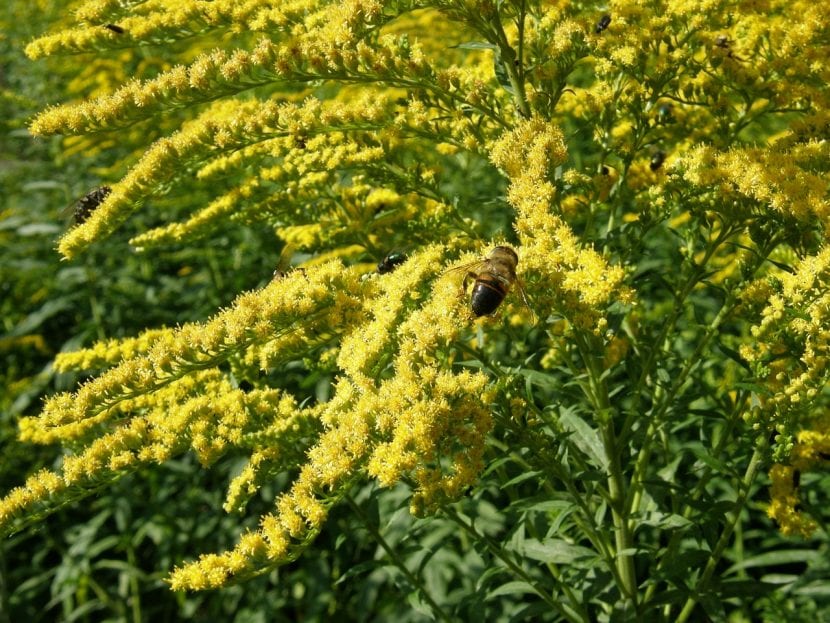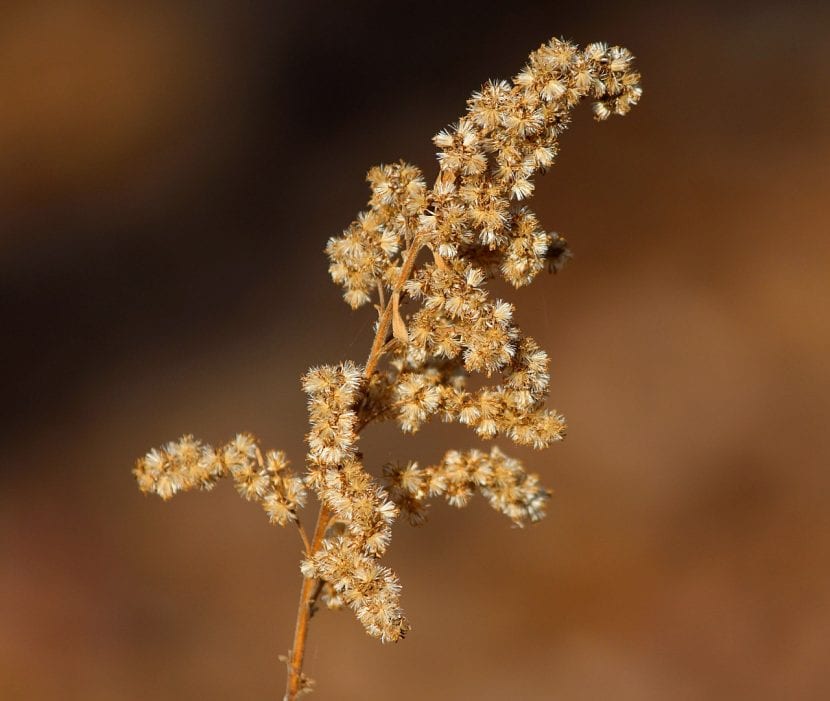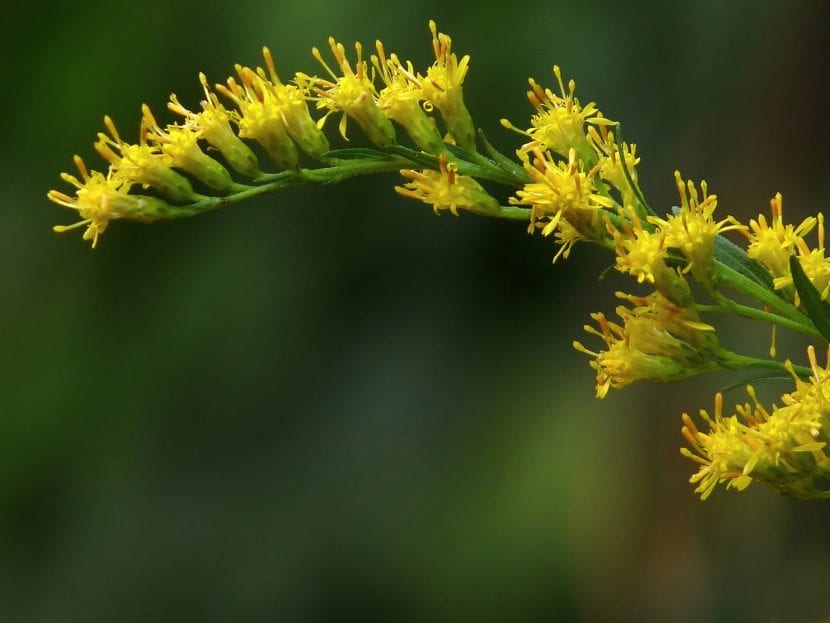
Herbs are usually plants that are not usually welcome in gardens, something that is completely logical if we take into account that they grow much faster than those that we are growing. But there is one that is so beautiful that we will love to have it: it is known as solidarity or goldenrod.
It produces so many intense yellow flowers that we will not be able to stop enjoying them. Sure. 😉
Origin and characteristics of solidarity

Our protagonist is a perennial herb native to North America, South America and Eurasia that belongs to the genus Solidago, which is made up of about 100 different species. It is characterized by reach heights between 60 and 150 centimeters, with slender stems, linear to lanceolate leaves with serrated margins. The flowers appear grouped in clusters during the spring.
In addition to having a rapid growth, it is so easy to care that it will not cause any problems. But let's look at it in more detail below.
What are the cares?
If you want to get a copy, we recommend providing the following care:
Location
Place your solidarity abroad, full sun.
Earth
- Land: is indifferent. It can grow in all types of soils.
- Flower pot: You can use universal growing medium for plants alone or mixed with 30% perlite, previously washed river sand or similar.
Irrigation
Three (maximum four) irrigations per week in summer and one every 4 days the rest of the year will suffice.
Subscriber
In spring and summer you can pay with universal fertilizer for plants following the indications specified on the product packaging, but it's not mandatory.
Planting or transplanting time
The best time to plant it in the garden it's in spring, when the risk of frost has passed. In the case of having it in a pot, it will have to be transplanted every 2 years.
Multiplication
The solidarity multiplies by seeds and by rhizomes in spring. Let's see how to proceed in each case:
Seeds

- The first thing to do is fill a seedbed (flowerpot, seedling tray, milk containers, yogurt glasses, ... whatever we prefer) with universal culture substrate.
- Now it waters well, soaking the entire substrate well.
- Then a maximum of three seeds are placed in each seedbed and covered with a thin layer of substrate.
- Then a sprayer is filled with water and sprayed the surface of the substrate.
- Lastly, a plate or tray is placed underneath that will fill up every time the slightly dry earth is seen.
The seeds will germinate in 15-20 days.
Rhizomes
To obtain new seedlings from rhizomes you have to extract the solidago from the pot, remove the soil and separate them with scissors or a small hand saw disinfected with pharmacy alcohol.
If you are cultivating in the ground, you have to dig one or two ditches about 20 centimeters, remove all the soil you can and cut the rhizome of interest with a previously disinfected serrated knife.
Rusticity
Withstands cold and frost up to -4ºC.
Curiosities about solidarity

Does not cause allergy
The so-called goldenrod is a very beautiful herb, but the truth is that it also has a very bad reputation because of Ambrosia, which are herbs that if you have allergic rhinitis (hay fever) can cause you more than one problem. The solidago, unlike the Ambrosia, produces a heavy and sticky pollen, too much for it to be carried by the wind. For this reason, its pollinators are insects, so it is impossible to cause allergies since said pollen is carried from one solidarity to another "on the back" of insects.
Has medicinal properties
There are some species, among which we highlight the solidago canadensis, which has medicinal properties. Used to treat all of this:
- Cystitis
- Nephritis
- Kidney stones
- Albuminuria
- oliguria
- Diarrhea
- enterocolitis
- enteritis
- Colds
- Lung problems
- Nausea
- Varicose veins
In addition, it is used as a stimulant, sudorific, tonic and carminative.
It is a melliferous plant
What does this mean? Very simple: what it is a plant that produces honey. Its flavor, according to Wikipedia, is between that of clover honey and buckwheat honey.
Serves as livestock feed
And also for horses. So if you want to save a little money on food, do not hesitate: sow seeds and in a short period of time you will be able to offer the plants to your animals.
There are species that are invasive
There are some species of Solidago that are causing significant damage where they were introduced. For example, the S. canadensis she is responsible for bringing 30 native Shanghai species to extinction; on the other hand, the S. Gigantea it is considered invasive in Europe, including Spain.
Where to buy Solidago?

You can get it in nurseries, garden stores, and also online. An envelope with more than ten seeds can cost around 1 euro, and an adult specimen about 2-3 euros.
Did you know this plant?